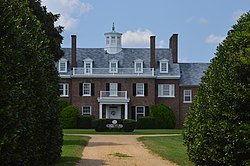
Westmoreland County is a county located in the Northern Neck of the Commonwealth of Virginia. As of the 2020 census, the population sits at 18,477. Its county seat is Montross.

Mount Vernon is the former plantation of Founding Father, commander of the Continental Army in the Revolutionary War, and the first president of the United States George Washington and his wife, Martha. An American landmark, the estate lies on the banks of the Potomac River in Fairfax County, Virginia. It is located 15 miles south of Washington, D.C., and Alexandria, Virginia, and is across the river from Prince George's County, Maryland.

The Northern Neck is the northernmost of three peninsulas on the western shore of the Chesapeake Bay in the Commonwealth of Virginia. The Potomac River forms the northern boundary of the peninsula; the Rappahannock River demarcates it on the south. The land between these rivers was formed into Northumberland County in 1648, prior to the creation of Westmoreland County and Lancaster County. The Northern Neck encompasses the following Virginia counties: Lancaster, Northumberland, Richmond, King George and Westmoreland; it had a total population of 50,158 as of the 2020 census.

The George Washington Birthplace National Monument is a national monument in Westmoreland County, Virginia, at the confluence of Popes Creek and the Potomac River. It commemorates the birthplace location of George Washington, a Founding Father and the first President of the United States, who was born here on February 22, 1732. Washington lived at the residence until age three and later returned to live there as a teenager.

Augustine Washington Sr. was an American planter and merchant. He was the father of the first president of the United States, George Washington. Born into the planter class of the British colony of Virginia, Washington owned several slave plantations, from which he derived the primary source of his wealth. He also speculated in land development and owned an iron mine. Although Washington never sat in the House of Burgesses, unlike his father and son, he served in various government positions in the counties where he owned land.
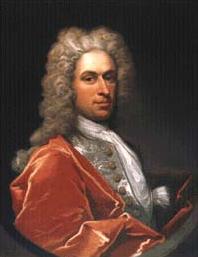
Colonel Thomas Lee was a planter and politician in colonial Virginia, and a member of the Lee family, a political dynasty. Lee became involved in politics in 1710, serving in both houses of the Virginia General Assembly, and also held important positions as Naval Officer for the Northern Potomac Region and agent for the Northern Neck Proprietary. After his father died, Lee inherited thousands of acres of land as well as enslaved people in then-vast Northumberland and Stafford Counties in Virginia as well as across the Potomac River in Charles County, Maryland. These properties were developed as tobacco plantations. Northumberland County was later subdivided, so some of Lee's properties were in modern Fairfax, Fauquier, Prince William and Loudoun Counties as well as the counties in the modern Northern Neck of Virginia.
Augustine Washington Jr. was an American planter, military officer and politician best known for being the half-brother of George Washington.
John Augustine Washington was an American planter and politician best known as the younger brother of George Washington and the father of Supreme Court Justice Bushrod Washington.
Thomas Ludwell Lee, Sr. was a Virginia planter and politician who served in the House of Burgesses and later the Virginia Senate, and may be best known as one of the editors of the Virginia Declaration of Rights.
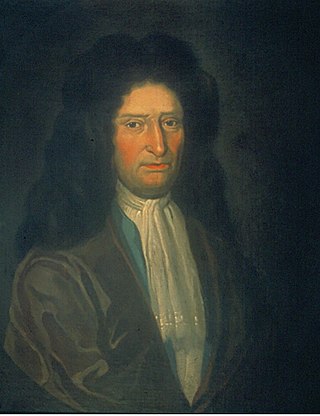
Colonel Richard Lee II was an American planter, politician and military officer from Northumberland County, Virginia who served in both houses of the Virginia General Assembly and was captured during Bacon's Rebellion.
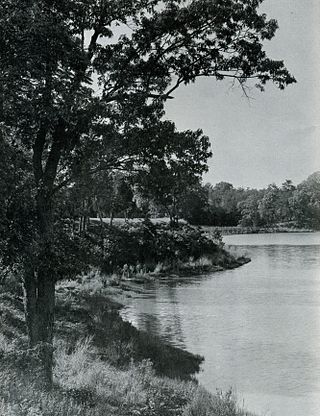
Popes Creek is a small tidal tributary stream of the Potomac River in Westmoreland County, Virginia. The George Washington Birthplace National Monument lies adjacent to Popes Creek estuary.

Claymont Court, or simply Claymont, is a Georgian-style brick mansion, the grandest of several built near Charles Town, West Virginia for members of the Washington family. The current "Big House" was built in 1840 for Bushrod Corbin Washington, nephew of Supreme Court justice Bushrod Washington and grand-nephew of George Washington, to replace the 1820 main house on his plantation that burned in 1838.

Bushrod Washington was an American attorney and politician who served as Associate Justice of the Supreme Court of the United States from 1798 to 1829. On the Supreme Court, he was a staunch ally of Chief Justice John Marshall. Washington was a co-founder and president of the American Colonization Society, which promoted the emigration of freed slaves to Africa. The nephew of American Founding Father and President George Washington, he inherited his uncle's papers and Mount Vernon, taking possession in 1802 after the death of Martha Washington, his uncle's widow, and with Marshall's help, published a biography of the first president.

Mount Vernon Mansion replicas are faithful copies or buildings inspired by Mount Vernon, the mansion of U.S. President George Washington in Fairfax County, Virginia, United States. Such buildings usually feature Mount Vernon's iconic piazza but might also copy its cupola, distinct dimensions, red-white-and-green color scheme, asymmetrical window distribution, or three-part organization.
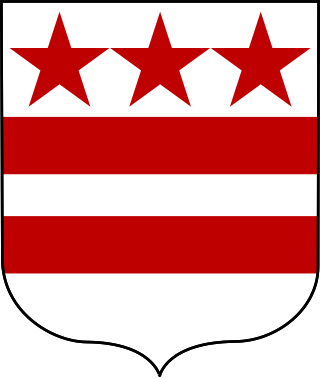
The Washington family is an American family of English origins that was part of both the British landed gentry and the American gentry. It was prominent in colonial America and rose to great economic and political eminence especially in the Colony of Virginia as part of the planter class, owning several highly valued plantations, mostly making their money in tobacco farming. Members of the family include the first president of the United States, George Washington (1732–1799), and his nephew, Bushrod Washington (1762–1829), who served as Associate Justice of the Supreme Court of the United States.

West Ford was the caretaker and manager of Mount Vernon, which had been the home of George Washington. Ford also founded Gum Springs, Virginia near Mount Vernon. He was a man of mixed-race, and possibly of Washington descent.
Sarah Johnson was an African American woman who was born into slavery at Mount Vernon, George Washington's estate in Fairfax, Virginia. She worked as a domestic, cleaning and caring for the residence. During the process, she became an informal historian of all of the mansion's furnishings. After the end of the Civil War, she was hired by the Mount Vernon Ladies' Association, ultimately becoming a council member of the organization. She bought four acres of Mount Vernon land to establish a small farm. The book Sarah Johnson's Mount Vernon (2008) tells the story of her life within the complex community of people who inhabited Mount Vernon.
Bushrod Corbin Washington was a Virginia planter and politician, nephew of Supreme Court Justice Bushrod Washington, and grandfather of Confederate soldier and author Bushrod C. Washington (1839-1919) also discussed below.
William Augustine Washington was a Virginia planter and officer who served one term in the Virginia House of Delegates representing Westmoreland County, as well as terms as colonel of the county militia and as the county sheriff, before moving to the newly established District of Columbia. The son of the half-brother of President George Washington, he was also one of the seven executors of the former President's estate.
Richard Scott Blackburn was a Virginia planter and politician who became an officer in the U.S. Army.
